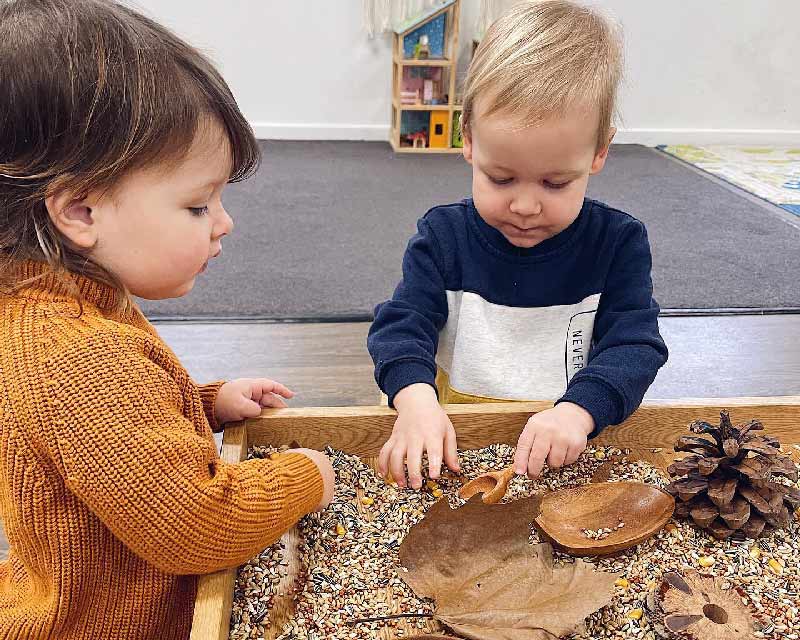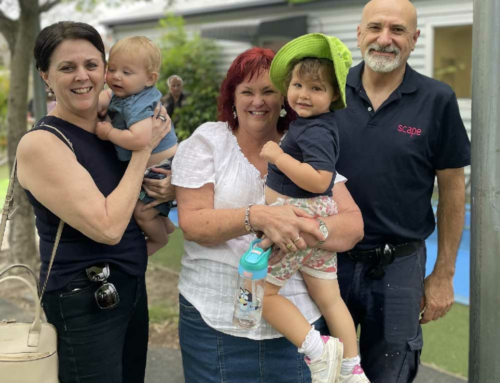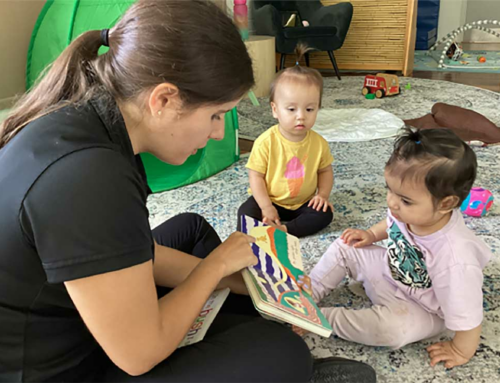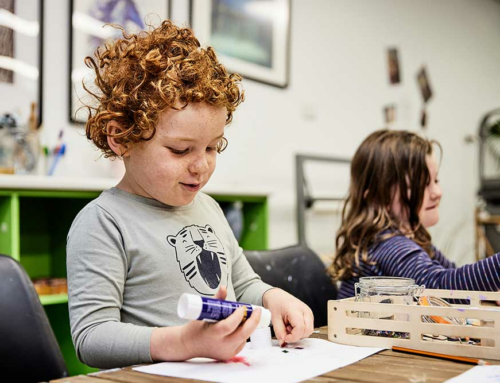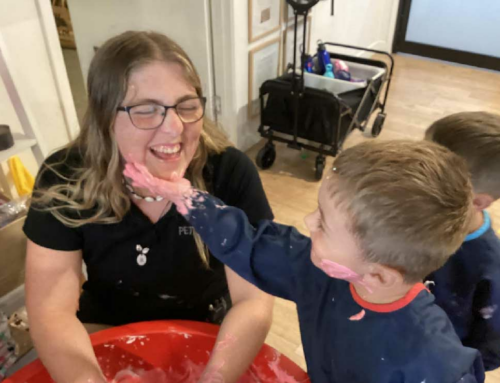Loose parts play is magical. Children are captivated by it and the use of open-ended materials. Playing with loose parts engages a child’s motor skills and nurtures the mind. It inspires children to move and play in different environments.
As a concept, loose parts play has been around for many years. It involves providing children with open-ended resources with multiple uses and without instructions or rules. It has many benefits that the Early Years Learning Framework (EYLF) supports.
You can encourage loose parts play in your child’s playtime at home. You may find some resources listed below around your home or in nature. In this article, we explore some of the best loose parts play options for children, such as:
- Collecting and organising loose parts
- Loose part play ideas at home
- Lose parts games and play date ideas
- Loose parts on the move in nature
- Repurposing loose parts
First, we discuss what loose parts play is and the benefits for children.
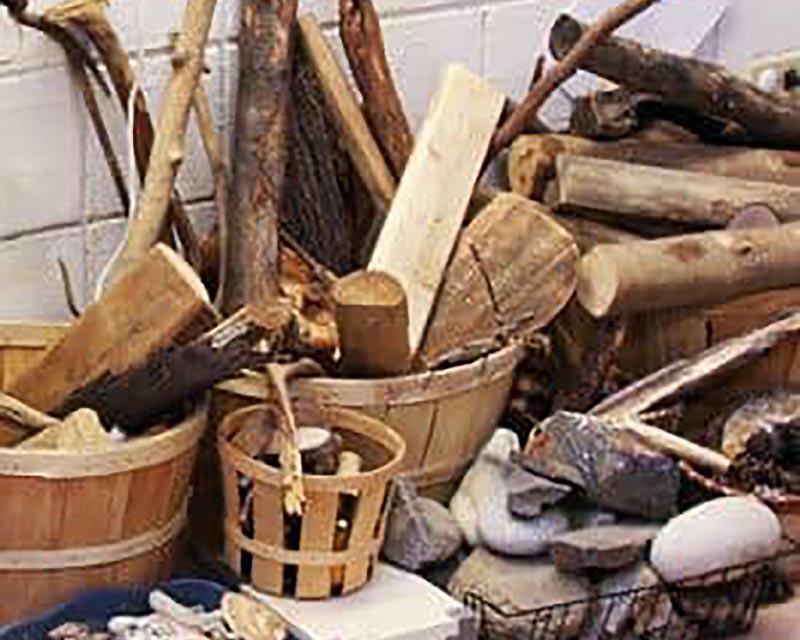
What is loose parts play?
Hundreds of years of history exist between loose parts and children’s play. In his Loose Parts Play Theory, Simon Nicholson first introduced the term in the 1970s. The theory focuses on the idea that loose part materials can easily be:
- Moved around.
- Altered.
- Put together and pulled apart.
- Designed and redesigned.
- Carried.
- Stacked and unstacked.
Benefits of loose parts play
The benefits of children’s loose parts include hours of fun and learning through unstructured child-led play. Ultimately, loose parts play encourages children to:
- Develop a sense of independence
- Encourage language development as children express their ideas
- Be free to explore different materials with endless possibilities
- Encourage creative thinking
- Inspire the use of age-appropriate recycled material such as cardboard boxes and bottle caps
- Practise critical thinking skills
- Develop problem-solving skills
- Explore the environment through trial and error
- Use natural objects such as pine cones, leaves, shells, sticks and feathers
- Manipulate materials to discover new ways of creating things and solving problems
- Promote group play and the development of social skills
- Nurture communication skills
- Engage in risky play
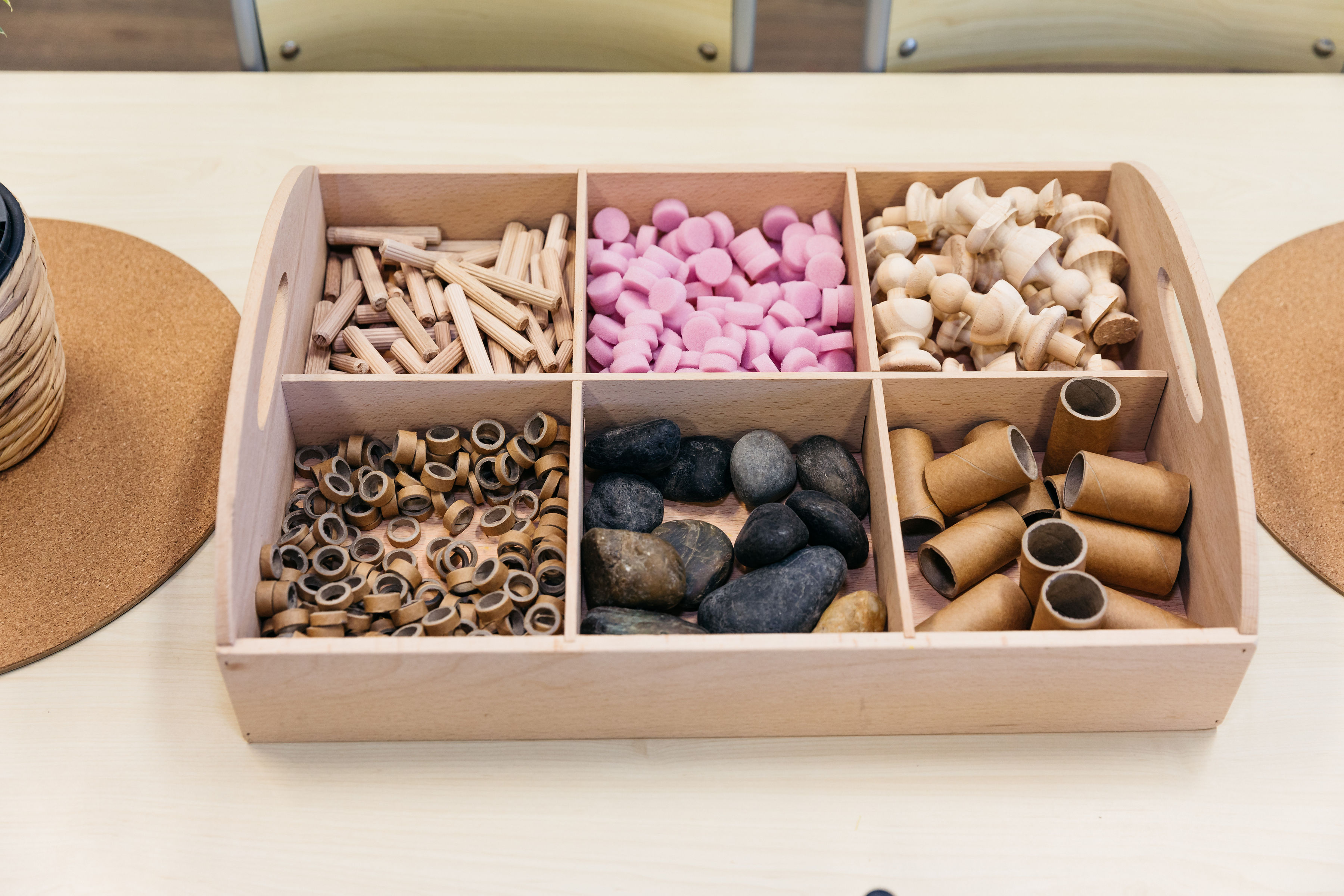
Organising loose parts resources at home
You may already have access to loose parts at home. The items you choose can be everyday items that offer your children open-ended play experiences.
When choosing loose parts, consider the range of materials suitable for the children’s ages at your home to create a safe environment.
Household items may include:
- Bottle tops
- Toilet paper tubes
- Pop sticks from ice cream blocks
- Plastic bottles
- Rubber bands
- Bread tags
- Paper scraps
- Bubble wrap
- Shoe laces
- Game pieces
- Plain paper
- Pens and pencils
- Ice cream containers
- Plastic or wooden pegs
- Cereal boxes
- Cardboard boxes
- Measuring and pouring devices
- Spoons, pots and pans
- Hair scrunchies
- Material remnants
- Pom poms
- Pipe cleaners
- Beads
- Buttons
- Fruit and vegetables
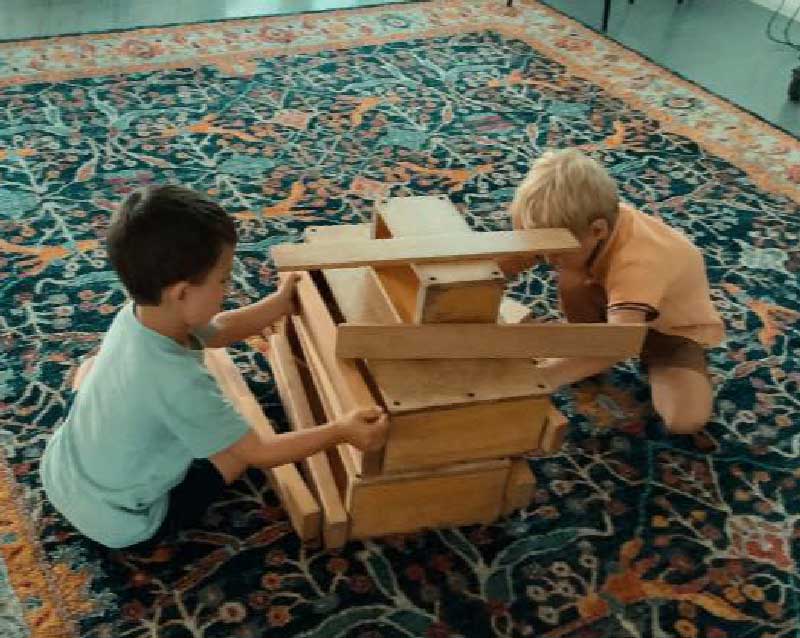
Then, there are resources to be found in the garage or work shed. Be sure to look around for loose:
- Wooden blocks or cut-offs
- Nuts
- Bolts
- Washers
- Pieces of wire (without sharp edges)
- Building materials such as tubing and u-bends
4 Easy ways to spark loose parts play ideas at home
1. Engage your child in the collection, sorting and storing of loose part items to inspire their ideas for open-ended play. Recycled or repurposed containers, such as ice cream or take-away containers, are suitable for transporting and storing resources.
2. Start with just a few items to avoid overwhelming your child. Children enjoy sorting through loose items on a table or in a box where they can choose what to use and do with them.
3. Babies and toddlers may find sensory materials from the kitchen appealing. For young people, food creates an incredible sensory experience. It can include lemons, apples, carrot pieces, baby food and broccoli. Their uses extend beyond the senses to creative expression and process art.
4. Loose parts play provides many experiences for children to play without rules or direction. Consider your child’s interests when choosing what loose parts to include in their environment. Create loose parts tubs that can extend their interests, providing endless opportunities for play.
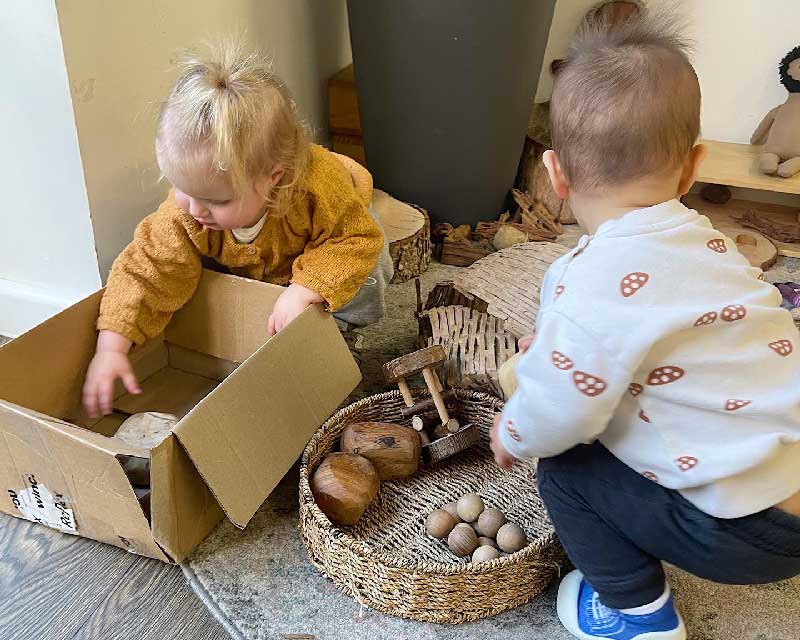
Loose parts for games at parties or play dates
One of the benefits of the open-ended nature of loose parts play is how it creates a sense of wonder in children. It inspires curiosity, problem-solving and divergent thinking.
When children play together with natural resources and everyday objects, they observe, share ideas and practise social and language skills. Loose part materials can provide a wide range of experiences for children and are ideal for group play.
4 Loose parts ideas for group experiences:
1. Boxes in a variety of sizes can create infinite possibilities. Imagine children turning them into trains, buses or cars, using them for a game of hide and seek or to set sail on a pirate ship!
2. Feathers, shells, seeds, cardboard tubes, colourful paddle pop sticks and paper can become magical wands, self-portraits and Christmas decorations. The possibilities are endless with just a few items and some glue, ribbon and scissors.
3. Pots and pans, potato mashers and big wooden spoons are fun to use in the sand or mud. Rocks or muddy porridge can become tonight’s dinner, or a large spoon may unearth the next big palaeontology find.
4. A basket of pre-loved clothing, shoes, accessories and props can spark creative roleplay scenarios. Children get excited about imaginative play, where they can pretend to be all types of characters.
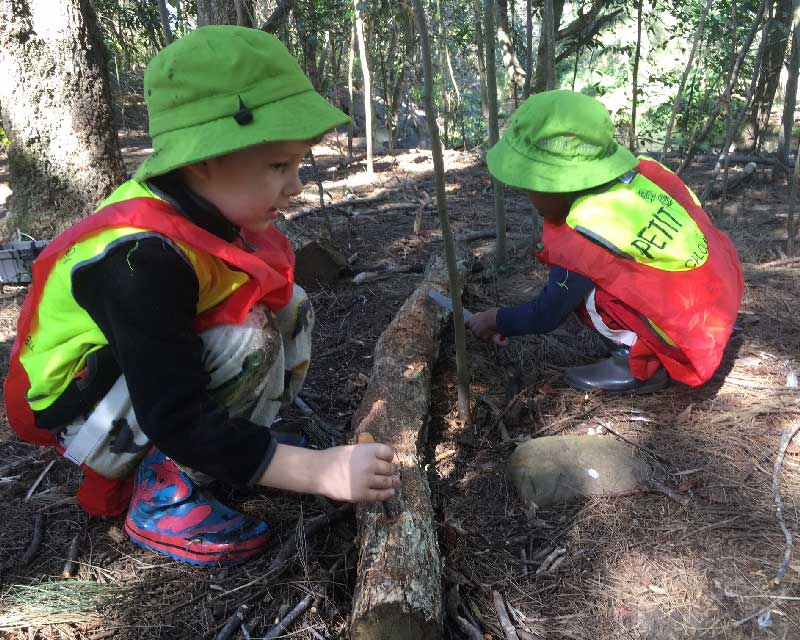
Finding loose parts on the move in nature
Playing with loose parts can enhance children’s learning in various ways, such as increasing physical activity and risky play. Self-directed outdoor play in nature and outdoors is essential for healthy child development, even with associated risks.
Getting out and about with your child, such as a walk around the neighbourhood or to a local park or garden, beach, or wilderness area, can spark hours of play in nature with loose parts.
You and your child can access many adventures to collect natural materials from the outdoor environment. You may want to search outside your home and at parks, beaches, bushes and creeks for:
- Flowers
- Seeds
- Ferns
- Pebbles and smooth rocks
- Pine cones
- Fallen twigs, branches and leaves
- Shells
- Cuttlebone
- Sand
- Seaweed
- Driftwood
- Bark
- Fallen feathers
- Grass
Give your child tools for transporting loose parts, such as buckets and repurposed containers. These items are perfect for carrying resources like sand and soil.
Learning experiences with loose parts play support play-based learning intentions, where children can find multiple purposes for loose materials.
Cardboard boxes can become many things, including containers for transporting loose parts. When they break down, add these to home composting and sustainability projects.
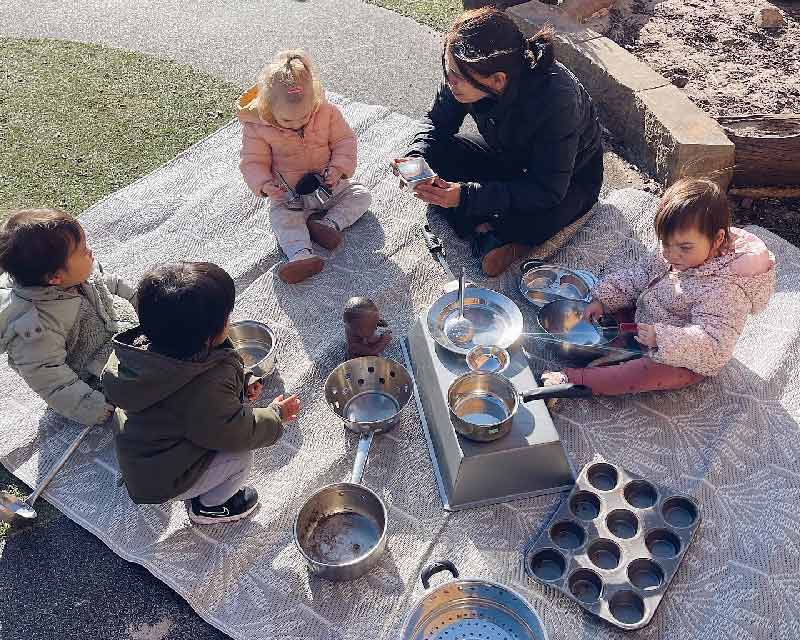
Repurposing man-made items for loose parts play
At home, we throw out too many items after a single use. Children can give paper bags, bottle caps, cut flowers and jars a new purpose in loose parts play.
- Encourage your child to help you sort through the garbage and select items suitable for loose parts play such as cereal boxes, paper and bottles.
- Go through your cupboards, closets and drawers for any clothing that can be repurposed for make-believe or turning into strips of materials for art projects.
- Before you throw out those delivery and packaging boxes, could they be the next spaceship to the moon or a helpful home robot?
Imagine all the wonderful play and open-ended experiences your child can have with this loose parts collection! Our list is extensive, but you can begin with a smaller collection of materials to create loose parts play opportunities for children at home.
Loose parts play provides infinite possibilities for children to explore, create, and imagine both within the home and outdoors. They have so many benefits for learning and development with hours of creative fun.
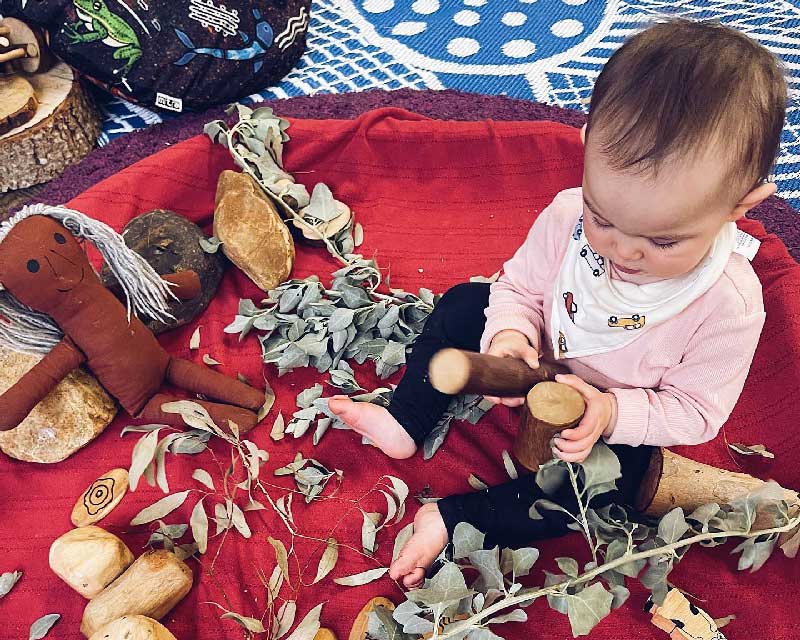
Join in loose parts play with Petit Early Learning Journey
Petit Early Learning Journey is a holistic progressive early childhood education and care service that inspires children to reach their potential for learning every day. Our environments are purposefully built to provoke children’s curiosity and exploration.
We believe that children are capable, resourceful and a constructor of their own knowledge. Play is one of the most important platforms for learning is it ignites their imagination and engagement for learning.
Ready to discover more about our beliefs and philosophy?
